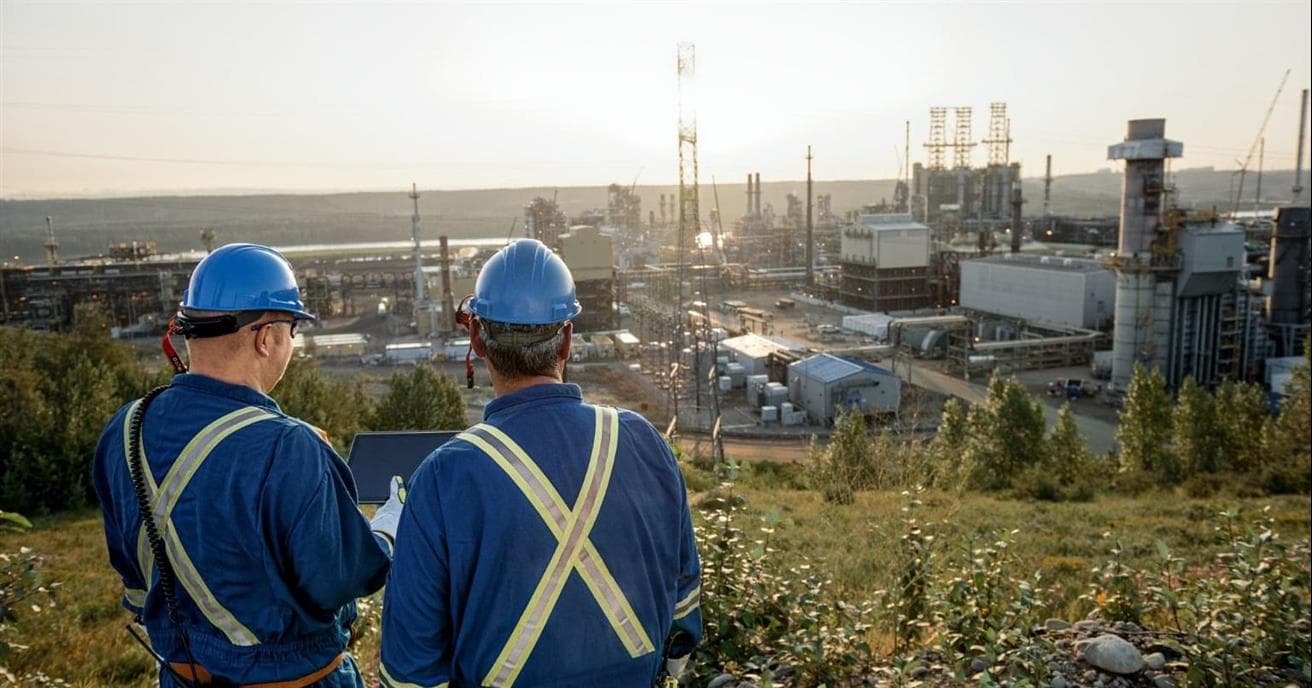But as he got older, Dan saw a pattern in teams that lifted the Stanley Cup every spring. “You won’t win in the playoffs without a great goaltender,” he says. “That’s something you’ll see with every Cup-winning team.”
And Dan, Director of Corporate & Downstream Strategy, sees a similar winning factor for Suncor as it faces the energy transition. “Oil sands and integrated downstream operations are our base business. Their strength and resiliency are the foundation for our success,” says Dan. “We won’t have the resources we need to invest in the energy transition if we don’t have a strong and profitable base business. And we need to continue to provide the energy the world needs now while reducing costs and carbon emissions.”
Just as NHL teams have developed statistics to assess performance, Suncor has identified some targets to evaluate its operations.
“We must keep our upgraders at Base Plant and Syncrude full and running. It’s as fundamental to our success as keeping the puck out of your net in the playoffs,” says Dan. “We are targeting 90 per cent utilization of those facilities. Having them operate safely and reliably is crucial for our success.”
Reliable operations allow Suncor to navigate the ebbs and flows of oil prices while delivering returns to shareholders and finding $2 billion in annual savings. These two key strategic objectives underpin Suncor’s position as Canada’s leading energy company.
“We are seeing very strong prices for crude right now but there’s an old adage in our industry – the cure for high prices is high prices,” says Dan, who previously worked for the renowned energy economist Daniel Yergin prior to joining Suncor in 2006. “We want to grow long-term returns on invested capital and be able to reward our shareholders with crude prices at $60 per barrel, or almost half of what it is right now. That’s why we continue to pursue freeing up about $2 billion in funds annually by 2025, or $1.60 per share. We have started several initiatives to meet that objective. A couple of high-value examples include the Suncor/Syncrude interconnecting pipeline and the coke-fired boiler replacement at Base Plant.”
In addition to providing high shareholder returns, profitable operations also help Suncor fund the technologies and investments to navigate the energy transition.
“Oil and gas have been around for more than 100 years since it was found in Pennsylvania and the commercial development of the oil sands started in the 1960s. And ever since then, we’ve really never faced a long period of demand decline since,” he says. “But that’s going to happen eventually. That signpost for me was Tesla because it made a car that people wanted to own because it was a great car, not because it was electric. That is where the world is going. But it also does not mean the end of oil. It does mean we need to plan for where the market may be headed.”
In that new environment, Dan sees opportunities. “A good example is the decision to focus on producing hydrogen, low-carbon electricity through cogeneration and producing renewable fuels while divesting from our investment in wind energy,” he says. “We are focused on areas where we have deep knowledge and a competitive advantage because of our integrated structure and ability to use economies of scale to ramp up and deliver existing and new energy to our customers.”
But for Suncor to lift its own trophy in the future relies on what happens at its upstream and downstream operations today.
“Taking care of our business today, whether it’s at our mines, in situ facilities, upgraders or refineries, is critical to ensure we achieve what we want in the future.”



